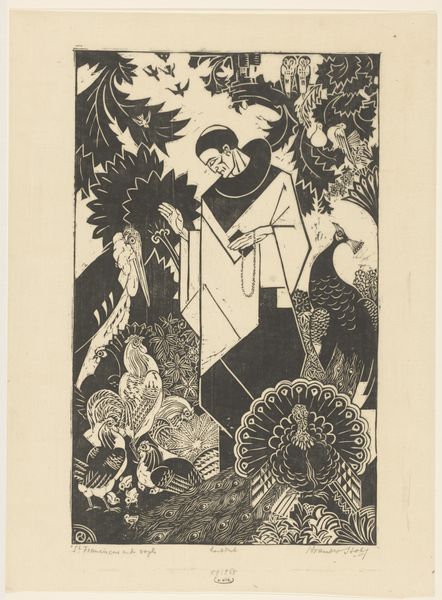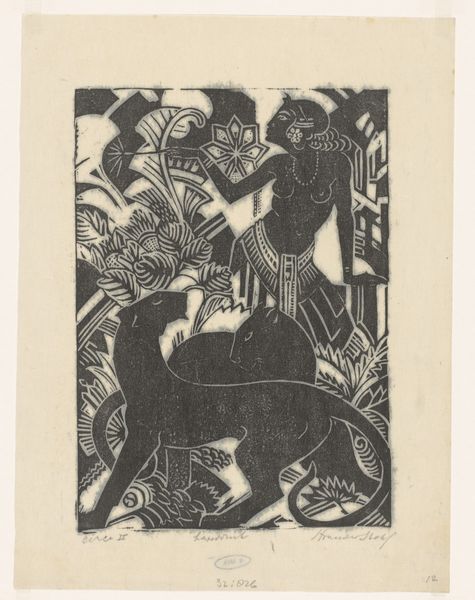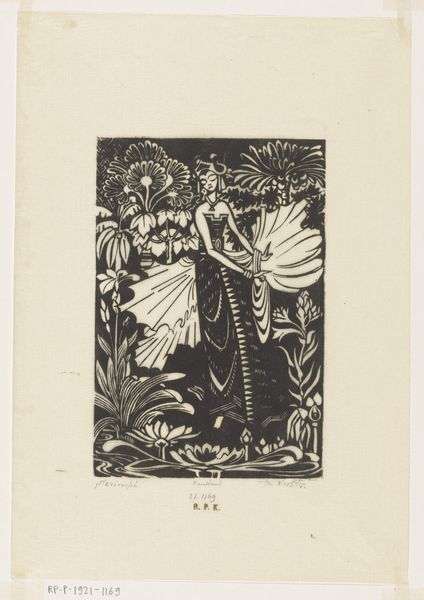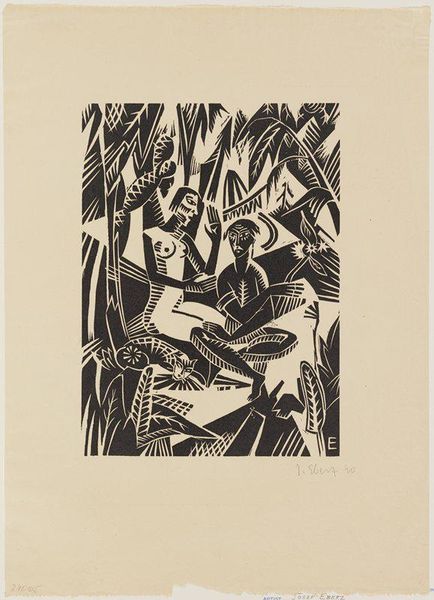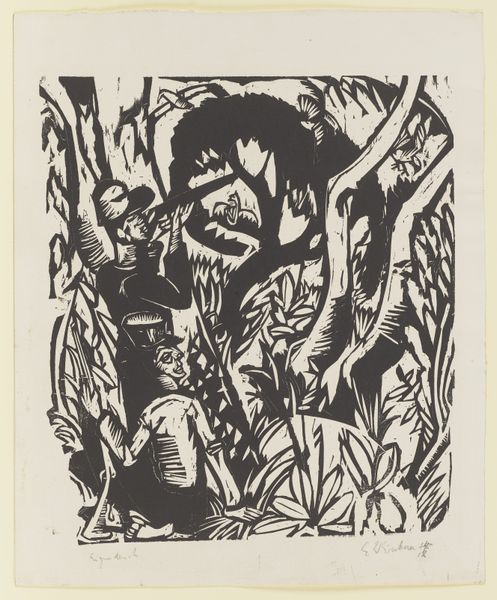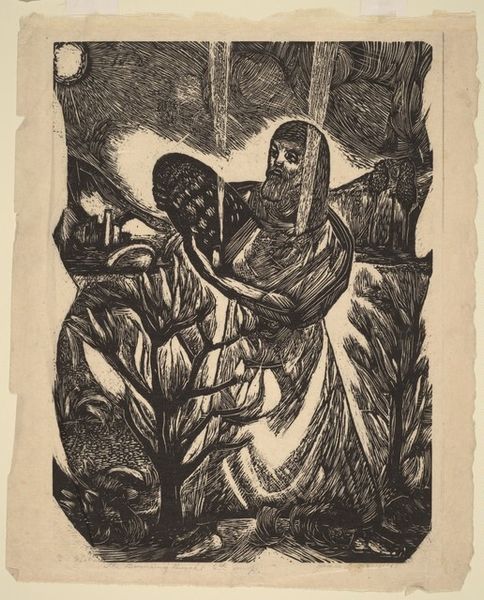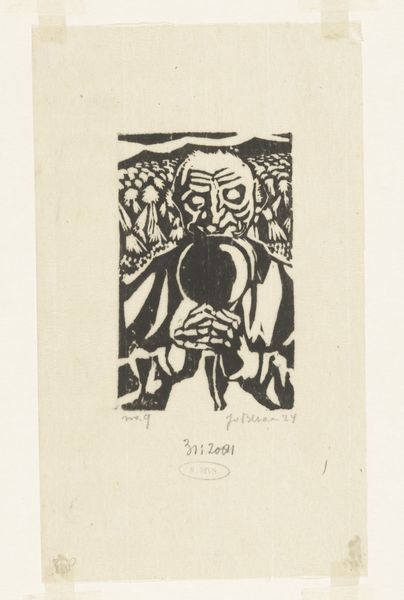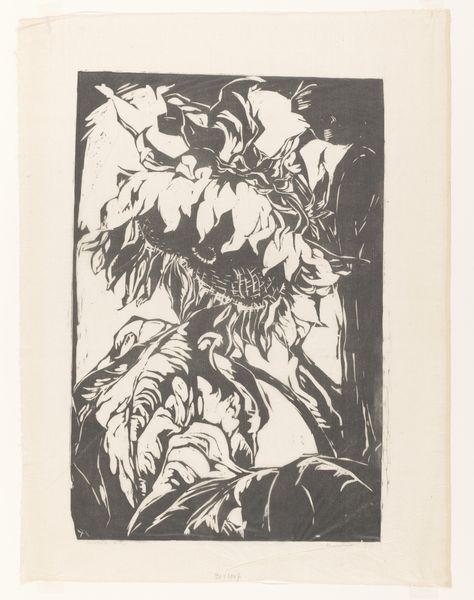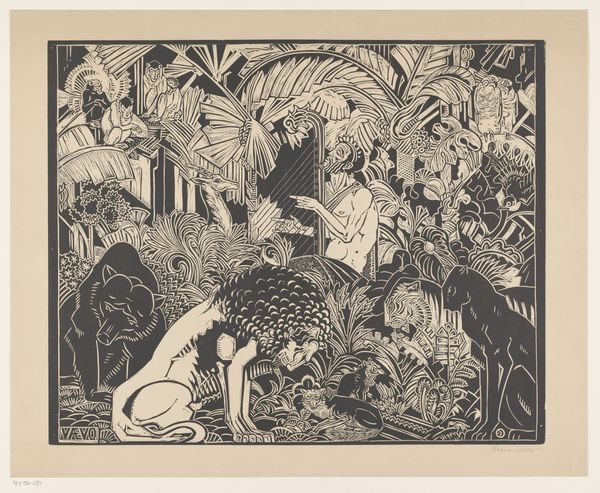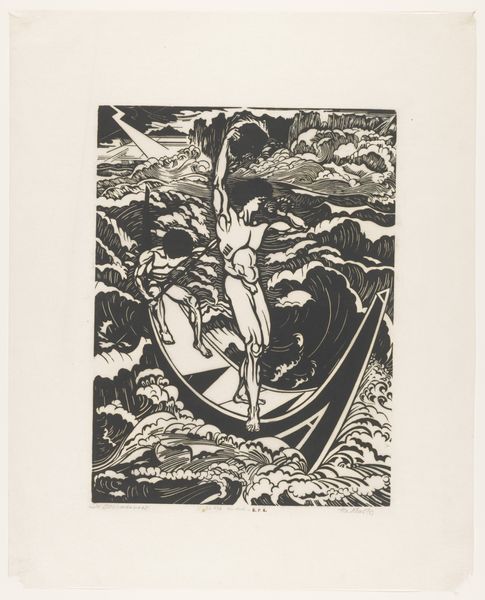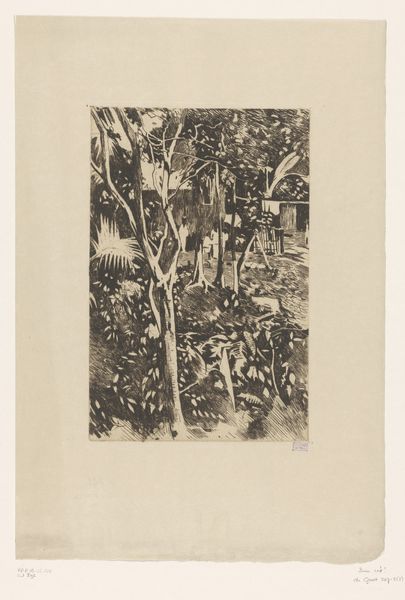
print, woodcut
#
african-art
# print
#
landscape
#
figuration
#
expressionism
#
woodcut
Dimensions: height 328 mm, width 248 mm
Copyright: Rijks Museum: Open Domain
Curator: This is Henri van der Stok's woodcut print, "Jager," created sometime between 1880 and 1932. Editor: It immediately strikes me as unsettling. The stark contrast and angular forms feel aggressive, yet there's a strange, rhythmic quality to the composition. Curator: Precisely. The strength of this piece lies in the dramatic interplay of positive and negative space. Look how the artist manipulates the dense, black woodcut to delineate the figure against the intricate foliage. Note the stylized tropical setting and the dancer depicted in it. Editor: I can't help but wonder about the artist's perspective and the history embedded within this image. The term "Jager," translating to "hunter," coupled with the stylized rendering of a person and tropical vegetation, can speak to the colonial gaze and the romanticization, even fetishization, of non-Western cultures. How might its production be bound within broader discourses of the exotic? Curator: An important point. While we can certainly interpret the social and political dimensions, we should not overlook the inherent qualities of the work. The artist’s hand is evident in every sharp line, conveying a powerful dynamism, consider its expressionist leanings. See how Van der Stok pushes the boundaries of the woodcut medium with remarkable effect? Editor: Fair enough. However, can we fully divorce the aesthetic experience from its historical roots? Is this admiration, then, implicated? We're seeing a representation of the exotic "other," and to appreciate solely its visual impact feels like a deliberate turning away from a loaded history of subjugation. It's important to reflect upon this discomfiting interplay. Curator: An incisive intervention! What I appreciate is the complex relationship the composition forms: how the lines are distinct yet interdependent, contributing to an energy that, for me, surpasses subject matter. Editor: I still sit with how a formal reading can risk sanitizing the historical underpinnings. We must ask what it means to be viewing this work today. What continues to be at stake in these images of culture? Curator: Perhaps both approaches allow us, finally, to ask better questions of both art and ourselves. Editor: Perhaps indeed.
Comments
No comments
Be the first to comment and join the conversation on the ultimate creative platform.
